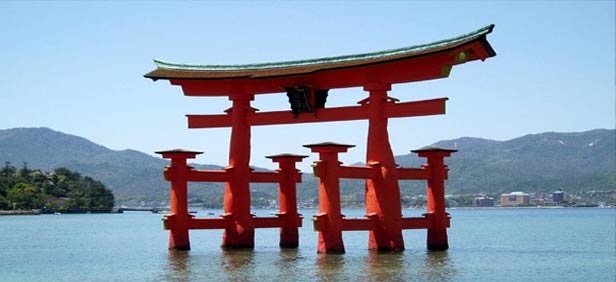The religion process in Japan has a very different history than Europe, when Christianity overwhelmed local pagan traditions. Buddhism and Shinto beliefs began to interact in the 6th century, when Buddhism was introduced. Religions like, Confucianism and Taoism, which came from China, have played a big role in Japanese culture over a period of more than 1.000 years, and those influence can be found in the use of Chinese calendar and popular beliefs in Japan. [2]
However, Christianity in Japan was introduced in the mid- 16th century and reintroduced after more than 200 years, when the Tokugawa period was over in Japan. In that period, Tokugawa government proscribed Christianity and expelled the missionaries from Japan. At that time there were more than 300.000 Japanese Christians. When the policy of seclusion ended, foreign missionaries returned to Japan in 1859, despite that they could only evangelized openly until 1873.
The number of Catholic and Protestant missionaries’ actives at that time were very influential in education and in the trade movement. Nevertheless, with the increase of nationalism and the promotion of Shinto was considered as a patriotic duty, which made Christians experience a difficult time in 1930. [3]
After the second World War, the immediate period of post-war, Christians gained a lot of support of the occupation authorities, but only with minor gains. In the year of 2006, the number of Christians in Japan were around 2.36 million individuals, which means less than 1.2 percent of the Japanese population. Even with the increase of Christians wedding ceremonies in Japan, Christianity, as a religion, still relate to a foreign by many Japanese people.[4]
However, with the modernization, many Japanese has been less tied with their religious family’s, specific with Buddhism temple and Shinto shrine, but still many of them consider themselves both Shintoist and Buddhist. Now days, the most average Japanese, do not practice the religion, do not attend to regular worship, despite of their religious affiliation. Differently from the West religion countries, which sees their religion as something exclusive, in Japan is common people share more than one beliefs, but the majority of Japanese population therefore are both Buddhist and Shintoist, due the fact that both have a faith centered upon a nonmaterial and group of values, which become more easy to adopt those two at the same time. [5]
Like mentioned before, Buddhism arrived in Japan in the 6th century and despite of it originated in India, Buddhism came to Japan via China and Korea. Japanese people embraced Buddhism, and had absorbed the religion very deeply into their culture, which took to a national character.
In the other hand, Shinto is a native religion of Japan, which became a kind of civil religion, helped to inflame nationalism in Japan during the second World War. With the end of the war, the state religion was abolished and the Shinto religion became a matter of personal choice. [6]
A growing ideological conflict between Japan’s religious beliefs and its modern, materialist society, can take people to question how can we define religion in Japan? According to Japanese author Kiyomi Morioka, the religion in Japan can be divided in three types of religious. Shinto, which is based on the community, Buddhism which is based on family traditions and the last one, based on the individual, which include the Christianity and the new religions.
All of these religions combined and interact with each other. The ideal Japanese religion still a combination of the Shinto love for nature, the respect for the ancestors brought by Buddhism and the Confucianism loyalty and respect. And although, most of Japanese claims to believe in any specific religion and its good ideals and behaviour to society, they still are very focused on their material aspect of life. [7]

I find this post interesting. can see that the Japanese aren’t so religious. not much of religious practices and less churches.
CurtirCurtir
Well the history of Japan is kind of related Korea and China.Korean migration influenced early Japan and elevated the material culture and Japan inherited aspects of Chinese Confucian culture yet modified them. Military Clan Polity contested with Buddhist Political Power to influence the Imperial Seat of power creating a complex socio- dynamic seeking control of the limited island resources. Shinto arose as the only created religion commissioned by the Imperial House for political purposes exalting Japanese racial exceptionalism and the samurai warrior class rose to develop a military hegemony known as the Shogunate that dominated Japan and forced exclusion for over 300 years.
CurtirCurtir
Japan opened the doors after World War I and it is one of the countries who joind the globalization club early. Until today Japan affects and is effected, especially religion wise, other religions and from other religions. orienalists worked really hard in the last 100 years to study Japan and they could make a change toward religion and globalization
CurtirCurtir
it a informative and intresting to know that buddhism, shintoism and the globalised religion which is christainity is dominant in japan as guide to live as human
CurtirCurtir
it is*
CurtirCurtir
Nice post! Of all of the religions you mention, Christianity has fared the worst in Japan, and you rightly connect that failure to its association with Imperial and Western powers. Nevertheless, it appears that secularism in the religion of choice today! 🙂
CurtirCurtir